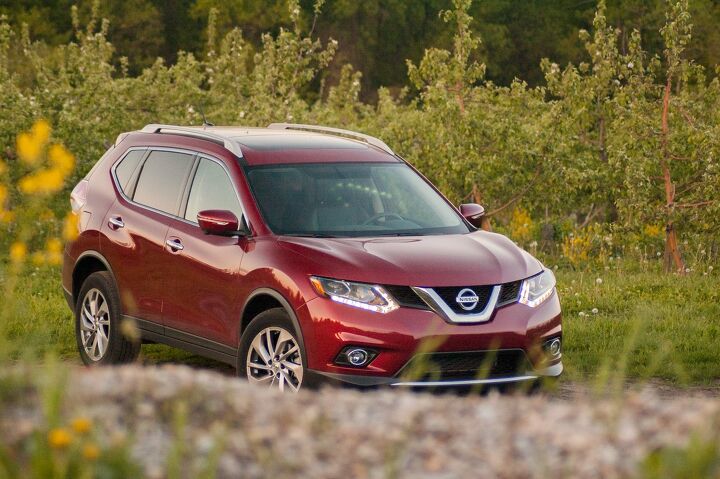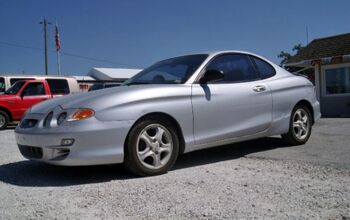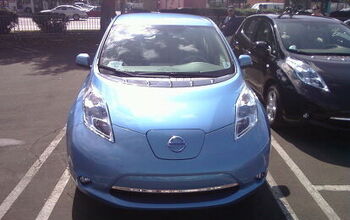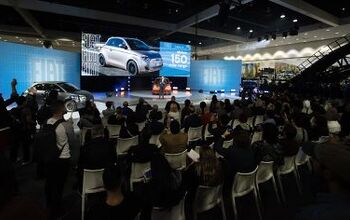Capsule Review: 2014 Nissan Rogue

We’re surrounded by contradiction. Multitasking isn’t and modern conveniences aren’t. The 2014 Nissan Rogue is is the second generation of Nissan’s utterly conventional compact crossover. The Rogue is not what its name says it is, but that’s working better than ever.
Nissan gave the Rogue a complete makeover for 2014 with styling that aligns with the Altima and Pathfinder. The 2014 Rogue is also larger, with enough interior room for an optional third row. It’s not getting on any bedroom walls with a carried-over 2.5 liter four cylinder engine and new CVT as its only powertrain. As banal as the Rogue may be, buyers are excited. The new Rogue is outdoing last year’s model, now called the Rogue Select, by more than 25%. That’s 20,000 vehicles.
The 2014 Rogue is gaining on the leaders, climbing the sales charts faster than the rest of the top five crossover classmates. It’s the fifth best-selling car in the class, just ahead of the also-new Jeep Cherokee. Derek and I have a running bet over Rogue and Cherokee sales, and he’s probably going to win. While the Cherokee made a big splash when introduced, the quieter Rogue has the lead by about 15,000 units. The cheeky Jeep has gained lately, and it’s a neck and neck battle for monthly numbers. I may win yet, but it’d take a disastrous month or two of Rogue sales for that to happen. While personality will get you a lot of press, conformity will get you customers.
Sometimes you don’t need to cause a revolution. The 2014 Rogue is a solid execution all-around, and it does offer some unique, useful features to keep driving sales after the new wears off. There’s three rows of seats, a folding front passenger seat, the slick Around-View Monitor system, though not all the good stuff is standard. The engine is torquey, if not exactly refined. When you make it work hard, a lot of sound booms through the firewall. Some more noise insulation would go a long way to refining the impression, because there’s nothing wrong with the way the powertrain works. Even the CVT is pretty well sorted. The strangest behavior I noted is how the transmission ratchets its variable ratios up during hard acceleration, and most people never, ever floor it.
The most noticeable thing about the CVT is its stepless nature, and that’s a positive. The second most noticeable thing is its contribution to fuel efficiency. The engine loafs on the highway and the window sticker of the AWD model I drove says you can expect 32 mpg, with city economy coming in at 25 mpg. Credit the computing power behind the XTronic, which adapts to driving style and calls on other sensors within the vehicle to determine whether the car is climbing a hill, zipping down the highway or on a windy secondary road. The transmission control unit chooses from an array of available patterns, and that’s how the XTronic CVT manages to please most drivers without totally offending the discerning tastes of automotive journalists. Yes, that’s a joke. One nice touch is the smooth way the transmission will automatically select a lower gear ratio for engine braking when you back off the accelerator. Internal upgrades to the transmission reduce friction and with the new software to tell the hardware what to do, only Honda can match Nissan’s CVTs.
The optional all-wheel drive system is an occasional-use affair. Rogues with AWD remain a front-wheeling proposition until things get slippery. It’s perfect for the way most people want AWD: seamless, unobtrusive, and automatic. Let’s face it, any Rogue that goes off road is probably doing it accidentally. There’s a locking function to the AWD system, good for situations where you can’t wait for the power to transfer from front to back, such as getting un-stuck.
The impression from behind the wheel is much improved over the first generation. The earlier car was fine, but only fine. The 2014 Rogue feels much more solid structurally, with grown-up suspension tuning that won’t give you internal bleeding. Weight gain has been kept in check by the use of lightweight materials for the hood and liftgate, among other measures, and that contributes to the lack of bobbing around. It’s not interested in any of the antisocial behavior you might call fun, but at least they got the steering weight right. There’s no feedback, though. The interior materials are on par with what you’ll find inside the Jeep Cherokee. That means it’s better than the RAV4 and CR-V. The SL is pretty loaded, feeling like it has more in common with an Infiniti than it does a Versa.
The $32,395 bottom line of the Rogue SL AWD I spent a week is also closer to Infiniti territory. That’s not inexpensive, so what do you get for your money?
The 2.5 liter and CVT are de rigeur, and there were 18” alloy wheels, LED running lights, foglamps, automatic headlamps, heated exterior mirrors with LED turn signal repeaters, privacy glass, rear wiper, and a very slow power liftgate among the highlights of the Cayenne Red test car. The tester also had the SL Premium Package, a $1,900 basket of excellent LED headlights, overly-sensitive Lane Departure Warning, Blind Spot Warning, Forward Collision Warning and Moving Object Detection.
Other SL-trim highlights include leather seating, power-adjustable driver’s seat and NissanConnect system with 7” touchscreen, Navigation, and voice recognition. Bose Audio is also part of the SL’s deal. For under $33K, you’re getting a lot of equipment, and there’s just as much cargo space in the Rogue as there is in the segment-leader CR-V. More, in fact, with the second row seats still in use (39.3 cubic feet in the Rogue vs. 37.2 in the CR-V.) Fold the seats and Honda has almost one cubic foot more, but the flip side of that is the 126 cubic feet of passenger volume when you get the three-row Family Package, which my test car was not equipped with. A two-row Rogue has 105.8 cubic feet of space for people, also just edging the CR-V.
With the 2014 Rogue, Nissan studiously took a tape measure to the competition. That’s not what you’d expect a rogue (small “r”) to do. They could have made the bodyshell from Plutonium and called it the Pillage, buyers would still like it. It’s hard not to like something that’s so full of cupholders, cubbie holes and cushy touches, and it’s got more personality than the RAV4 or CR-V. The driver’s choice in this class is still the Mazda CX-5, which loses pretty hard to the Rogue on paper.
The Rogue is a traditional SUV gone rational. Those hoary old truck-based things were truly contradictory. Four-bys being used as family cars. At least the Rogue is comfortable in its skin, which keeps everyone else equally comfortable within that skin.

More by Winston Braithwaite
Latest Car Reviews
Read moreLatest Product Reviews
Read moreRecent Comments
- Arthur Dailey The longest we have ever kept a car was 13 years for a Kia Rondo. Only ever had to perform routine 'wear and tear' maintenance. Brake jobs, tire replacements, fluids replacements (per mfg specs), battery replacement, etc. All in all it was an entirely positive ownership experience. The worst ownership experiences from oldest to newest were Ford, Chrysler and Hyundai.Neutral regarding GM, Honda, Nissan (two good, one not so good) and VW (3 good and 1 terrible). Experiences with other manufacturers were all too short to objectively comment on.
- MaintenanceCosts Two-speed transfer case and lockable differentials are essential for getting over the curb in Beverly Hills to park on the sidewalk.
- MaintenanceCosts I don't think any other OEM is dumb enough to market the system as "Full Self-Driving," and if it's presented as a competitor to SuperCruise or the like it's OK.
- Oberkanone Tesla license their skateboard platforms to other manufacturers. Great. Better yet, Tesla manufacture and sell the platforms and auto manufacturers manufacture the body and interiors. Fantastic.
- ToolGuy As of right now, Tesla is convinced that their old approach to FSD doesn't work, and that their new approach to FSD will work. I ain't saying I agree or disagree, just telling you where they are.






















































Comments
Join the conversation
To me, every one of these compact CUV's scream "middle aged woman".
Comparing these small CUVs, the Rogue actually offers a pretty competitive package for a family car. A lot of this is due to it being the most recent offering. It's very roomy inside and fully loaded with the SL trim you get good features like LED lights, panoramic roof, and around view monitor. There cargo storage system in the back is legit. It's not fun to drive, but for hauling a family of four and all of their stuff, it works. I, too, am struck at how expensive these small CUVs are compared to midsize sedans and other vehicles. In most instances, a sedan still seems the best way to go, but Americans and young mothers in general have been brainwashed that they need a SUV. Unfortunately, the NHTSA front crash test results were mediocre, which is a real downfall for a family car.